You've spent weeks, maybe even months, or—if you're a particularly bad procrastinator—years telling yourself and your spouse that you're going to clean the garage out. Maybe one weekend you started the process by moving around a few shelves and throwing out that children's tricycle your kids have grown too big for but that's as far as you got. Well, now it's time to buckle down!
Here are the best ways for you to maximize space in your garage so you can stop tripping over boxes every time you unload the groceries from the trunk of your car.
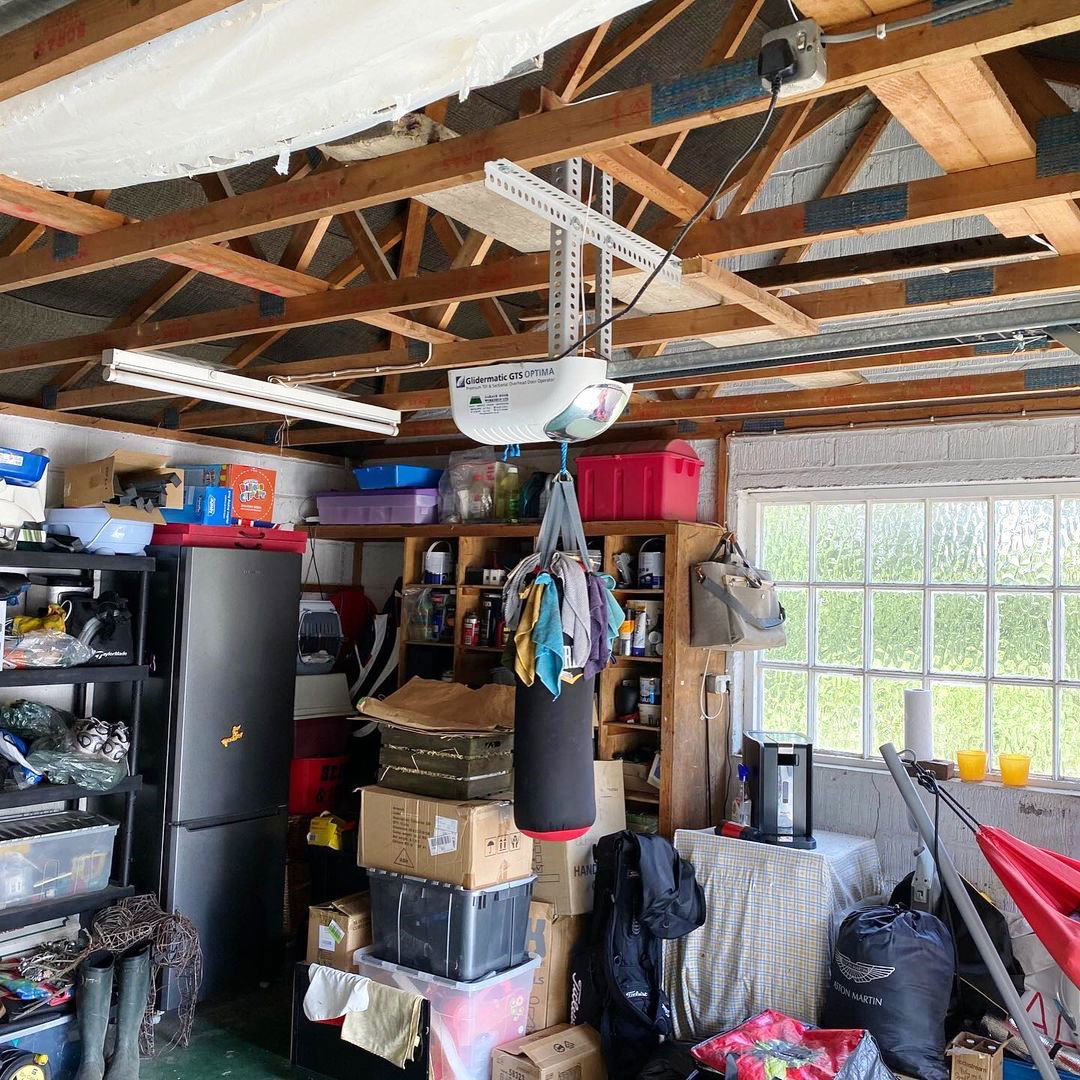
Decluttering Is Step One
If you're going to optimize your garage space, you first need to clean out the entire space. Depending on the size of your garage (and how many years you've been collecting clutter for), this could be a full-day event or it may only take you a few hours.
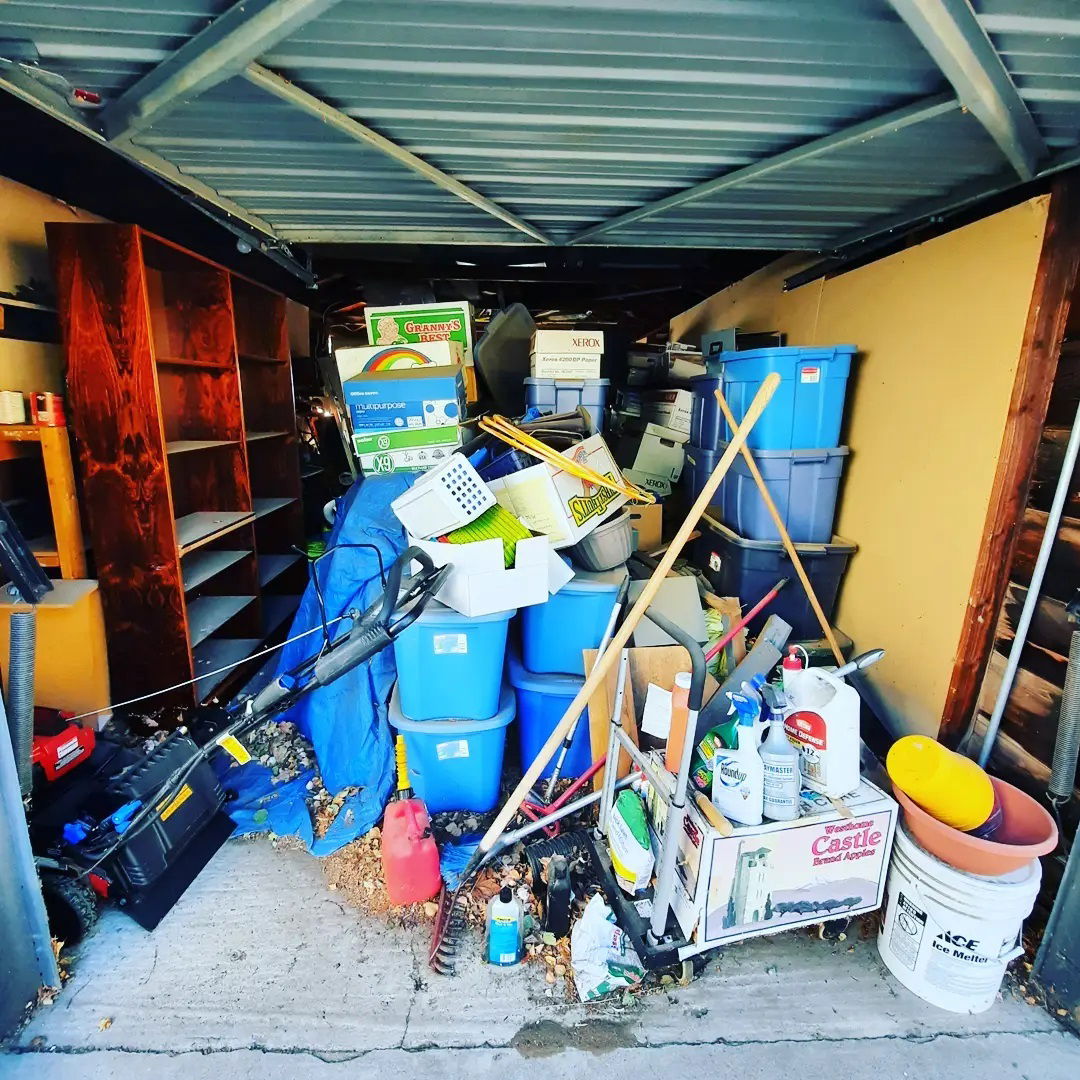
Go through everything in the garage and decide what's you'll be keeping and what you're getting rid of. Properly dispose of expired cleaning products and the old cans of paint. Spread out a tarp nearby so you can lay out all the tools and other items you're keeping. You can also make a donation pile for things like toys or sporting goods your kids no longer use (think hockey sticks, scooters, or jump ropes).
Take the time to look through every single thing and make a decision about it so you're not just shifting your clutter around and putting it back into the space to collect more dust.
Once you've sorted through everything and decided if it's going into the "keep" "toss" or "donate" piles, you can move on to the floor plan.
Mapping Out the Space
If you're truly going to maximize the space in your garage, you need to know how much space you're working with. And you especially want to know the dimensions of the space you're working with before you start ordering cabinets or buying lumber to build new shelves. Grab that tape measure we know you have on hand and measure out the garage's dimensions.
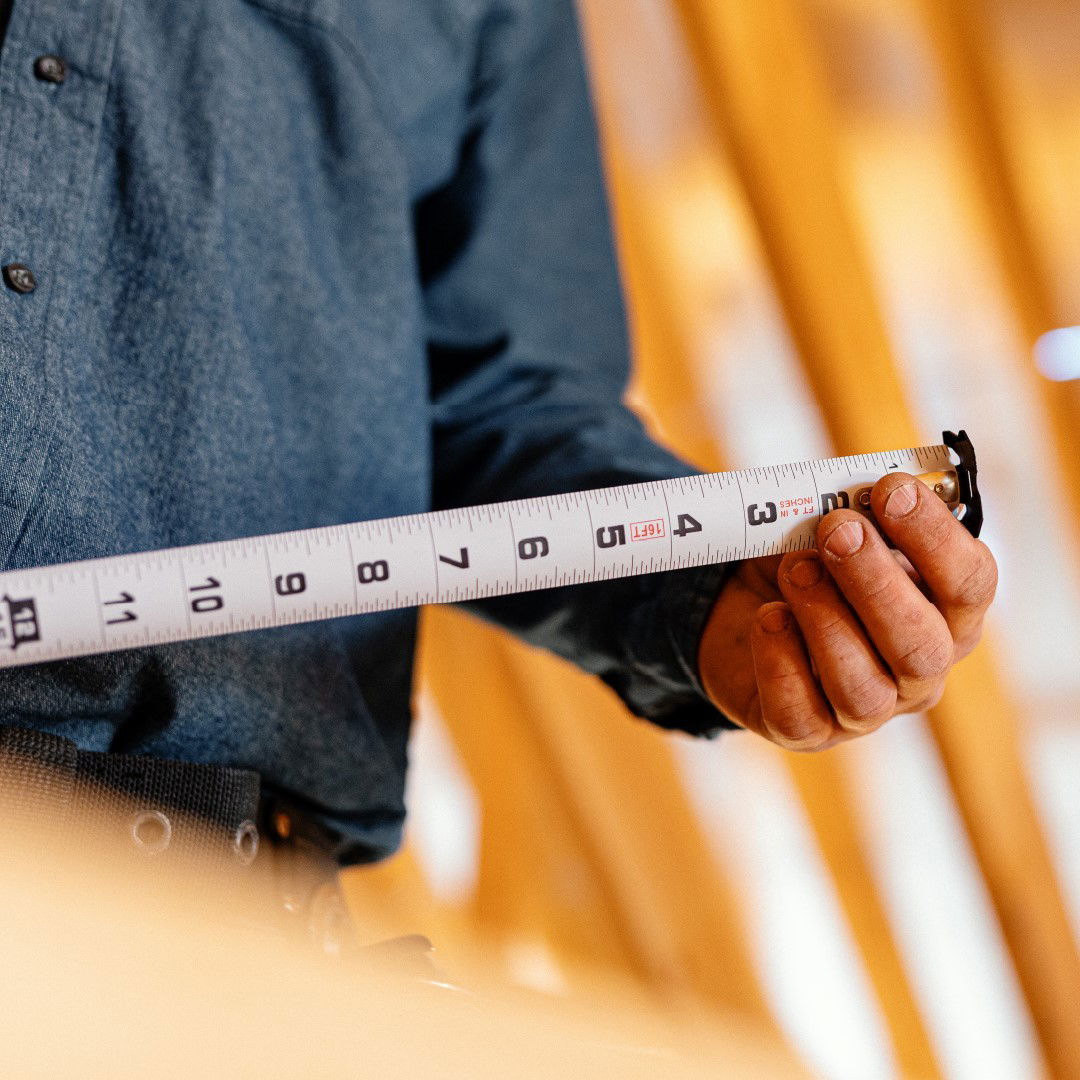
Even if you're fairly confident you already know the dimensions, measure it anyway just to be sure. When mapping out the space, take note of where doors and windows are as well as outlets and light switches. This will come in handy if you plan on purchasing cabinets (more on that to come). You should also factor in whether or not you plan on parking in the garage, and how much space your cars will take up.
Inspect the Space For Potential Problems
Since you’ve already taken everything out of the garage, it’s the perfect time to not only clean the space but also inspect the area for any potential problems.
Check for signs of water damage or cracks around windows and door frames that could be letting in moisture. If you do find small cracks you can fill them in with caulking to prevent condensation from seeping into the garage. Consider the ventilation in your garage as well. Do the vents need to be cleaned out? Do you want to install a heater to help with climate control?
Opt For Clear Storage Items Whenever Possible
When it comes to storing things in the garage, you should always opt for transparent or at least semi-transparent options. Any sort of clear-plastic storage bin is going to be your new best friend. By opting to store things in clear products, it means that you'll always be able to tell what's inside of the garage. You won't have to tear apart your shelves or sort through dozens of cardboard boxes every time you're trying to find one specific item, so you won't leave a trail of clutter behind you.
You can also repurpose mason jars or other glass jars from your pantry. Instead of recycling them, rinse them out and store small pieces like nails and screws in them. Check out MMDIY for more tips on garage organization.
Use The Wall Space Where You Can
One of the best ways to maximize space in your garage is to stop taking up so much floor space. You've got all these blank walls to work with, why are you still stacking boxes on the ground in the corner? Any sort of sporting good is primed and ready to be mounted on the wall, leaving you floor space to actually walk through your garage. Bikes, hockey nets, ski poles, or lawn chairs can all be stored easily by installing a few wall racks and mounting some wall hooks.
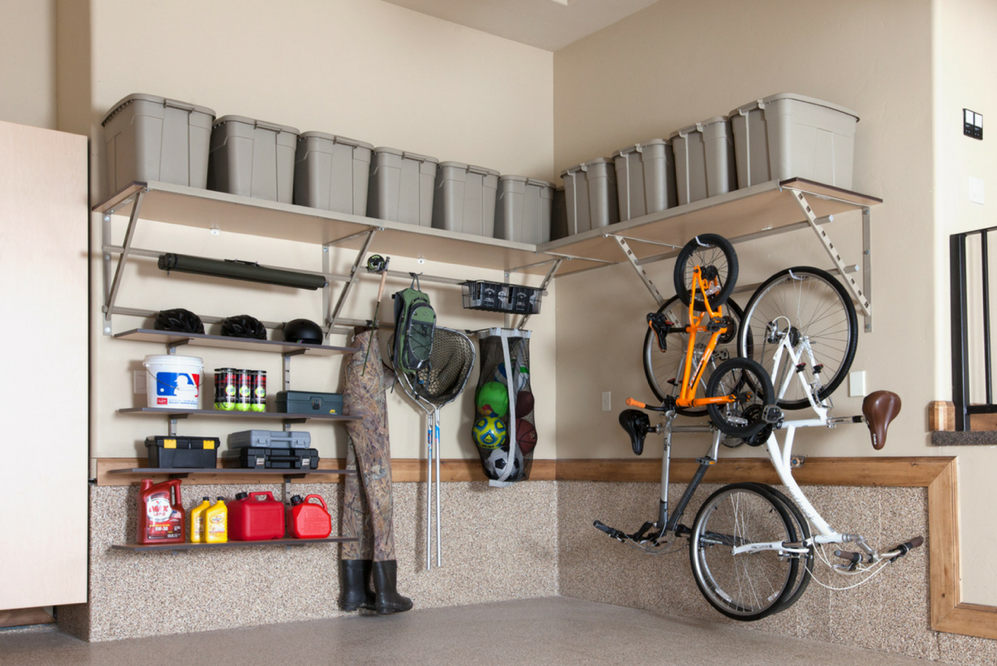
Utility racks are a great way to store gardening tools or lawn supplies too. If you want to stop tripping over that pesky shovel or broom every time you get into the passenger seat of your car, a utility rack is a way to go. Smaller things like a watering can
You can also use your ceiling space to store flat objects you don't use frequently, like ladders. Just make sure that any shelves or racks you install on the ceiling don't interfere with the garage door mechanisms or operating system.
Install Built-In Shelving & Cabinetry
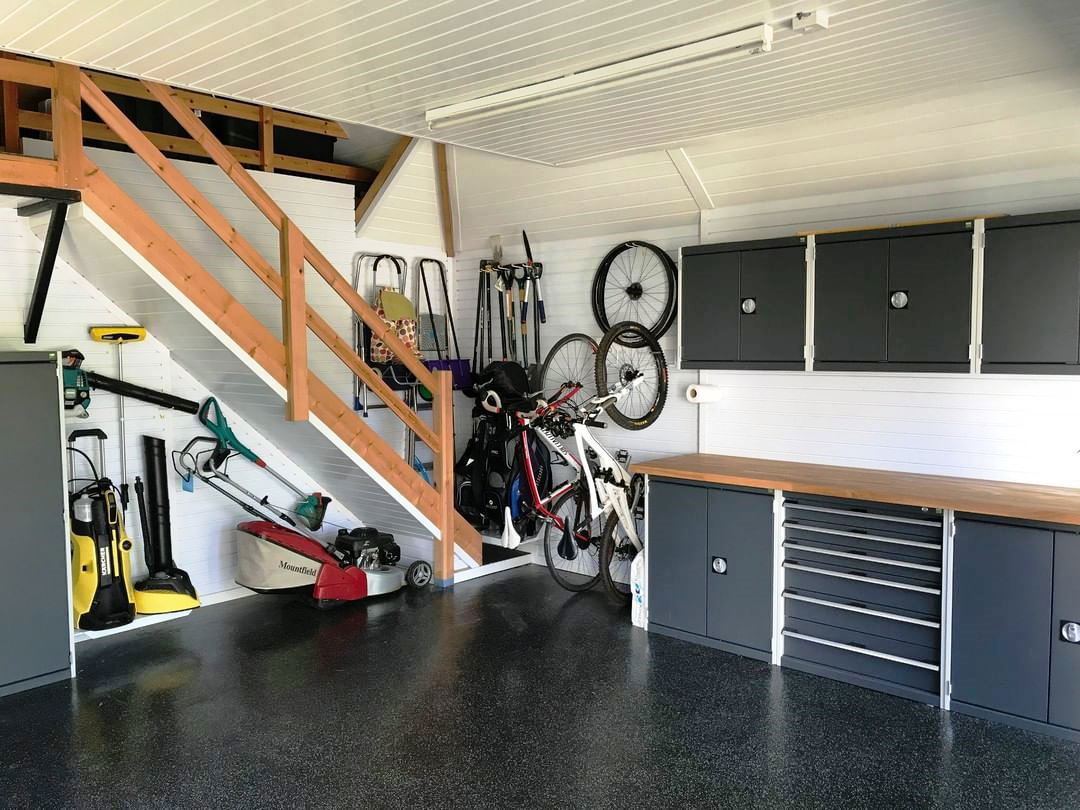
Beyond optimizing wall space by installing wall racks or mounts, you'll also want to install some sort of built-in shelving or cabinetry. Whether you want to build the shelves yourself or buy a garage storage shelving/cabinetry system from somewhere like Home Depot, it doesn't make a difference to us! Just do it. It's okay to still have a few boxes stacked, but you're going to feel much better about your space if your power tools are properly stalled and you have well-organized shelves to look at.
In terms of how many shelving units or cabinets you should buy, that’s up to you! Consider not only the items you already own that you want to store but also any future purchases. Do you have an extensive
Pro tip: When buying cabinets, even if they are upright and stand floor to ceiling, try to pick ones that have a few inches of space between the unit and the floor. It'll make it much easier to clean the garage if you can sweep under the cabinets without having to physically move them all.
Seasonal Items Should Be Stashed In The Tough Corners
No matter how well you organize the space, there are going to be a few corners or areas that are harder to access than others. Store your seasonal or least-used items in those hard-to-reach corners.
The inflatable pumpkin you pull out every year can be wedged in behind the lawnmower 11 months of the year, all the camping gear can be stored on the top shelf of the new shelving unit you just installed and the huge box of Christmas lights can be pushed to the back of the cabinets because you don't need to access it frequently.

